1. Hagia Sophia, Istanbul, Turkey

Hagia Sophia is both a former Greek Orthodox Church and an Ottoman imperial mosque. Built in AD 537, it was once the largest building in the world. It became the city’s principal mosque in the 15th century when the Ottomans conquered Constantinople. Most people hotfoot inside to explore its spectacular interiors, but it’s worth pausing to appreciate its spectacular facade too.
2. Chateau de Chambord, Loire Valley, France

France isn’t short of fairytale palaces, but Chateau de Chambord is one of its most iconic. Five hundred years on, the architect of the famous castle still remains a mystery too, with some claiming it could be Leonardo da Vinci himself. Ostentatious, over the top and extravagant, it’s one of the most impressive examples of French Renaissance and Medieval Revival architecture.
3. The Blue Mosque, Mazar-i-Sharif, Afghanistan

Afghanistan’s magnificent Blue Mosque, or Mazar-i-Sharif Mosque, is a tranquil oasis. An original shrine stood here until 1157, but Genghis Khan destroyed it on his journey west. In 1481, Sultan Husayn Mizra rebuilt the Shrine of Ali in the grand fashion we’re familiar with today. Its intricately painted clay tiles are mesmerizing.
4. The Palace Museum, Beijing, China

Tucked away on 178 acres is this gem of an imperial palace, also known as the Forbidden City. It served as the royal residence for emperors of the Qing and Ming dynasties and today houses a treasure-filled museum. In 1961, the State Council designated it as one of China’s foremost protected cultural heritage sites.
5. Cathedral of Brasilia, Brasilia, Brazil
.jpg)
One of the least traditional entries on our list is nonetheless one of the most beautiful. This spectacular stained glass crown-shaped structure was built between 1958 and 1970 by two prominent communists, Oscar Niemeyer and Lucio Costa. Its perfect symmetry and angles, as well as striking interiors, really captivate the imagination.
6. Angkor Wat, Siem Reap, Cambodia
_VI_(1070423631).jpg)
Angkor – which means city – was once the seat of the Khmer Empire from the 9th to the 15th century. It is spread over an incredible 60 miles, comprised of over 1,000 stone temples. Angkor Wat is the most striking. Built in the early 12th century, it’s the largest religious monument in the world today. The temple emulates Mount Meru, the sacred centre of the universe in Hindu mythology, while the surrounding moat symbolizes the oceans.
7. Jefferson Memorial, Washington DC, United States

Perched on the edge of the water-filled west side of the National Mall, the open-air pantheon, dedicated to America’s third president, is one of the most serene spots in the city. The neoclassical style memorial was only completed in 1947. It looks its most beautiful framed by the cherry blossoms in spring.
8. Semperoper, Dresden, Germany

Built in 1841, the Semperoper is a bit of a hodgepodge of styles – which only adds to its charms. There are Early Renaissance, Baroque and even Corinthian style pillars typically seen in classical Greece. The building today is a reconstruction of the original, which was bombed in the last few weeks of World War Two.
9. Westminster Abbey, London, United Kingdom

Between its towering Norman masonry, famed vaulted ceiling and pointed arches, and epic stained glass windows, Westminster Abbey is an architectural marvel. It’s a treasure trove of artefacts, paintings and people too. The Abbey is home to the shrine of St Edward the Confessor, the tombs of countless kings, queens and poets, and it’s been the scene of every Coronation since 1066.
10. Dancing House, Prague, Czech Republic
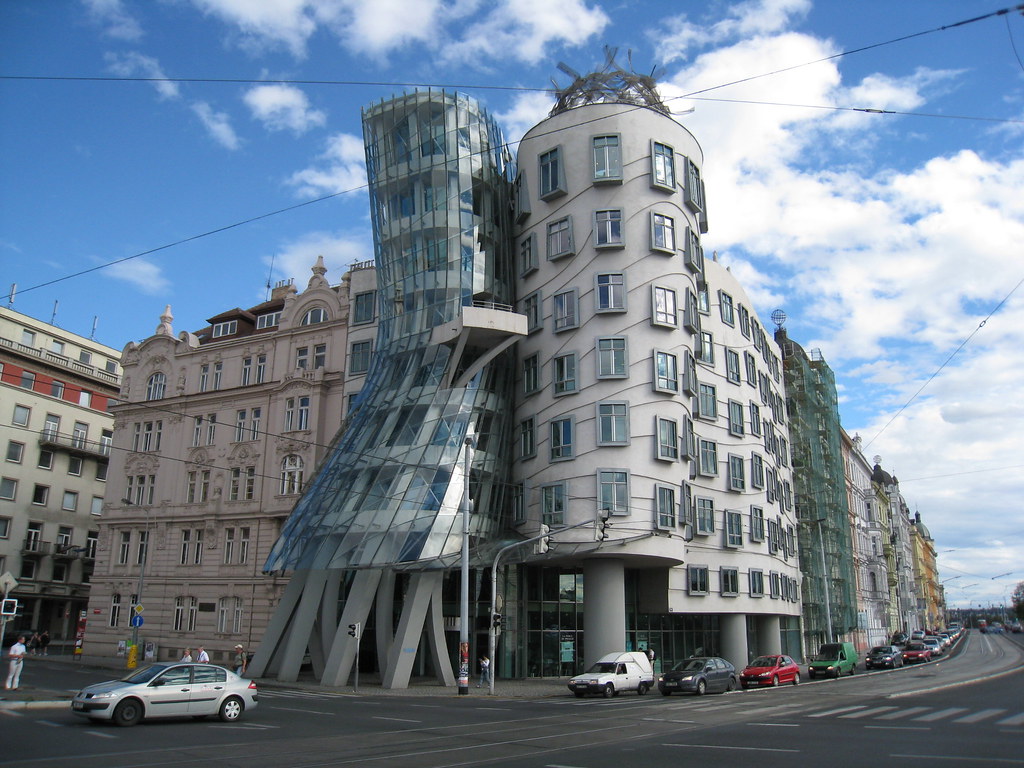
Nestled between some of Prague’s finest baroque, gothic and art nouveau buildings is the Dancing House, a controversial but undeniably striking building. Its nickname is Fred and Ginger, after the famous dancing duo Fred Astaire and Ginger Rogers, because the house resembles a pair of dancers. It sits on the ruins of a house destroyed by the U.S. bombing of Prague in 1945.
11. Fallingwater, Pennsylvania, United States

Designed by Frank Lloyd Wright in 1932, Fallingwater is perhaps the most famous private residence in the world. The unique design makes it look like there’s no solid ground beneath the building, that it’s floating on top of the waterfall. You can even buy a lego model of the historic landmark, such is its reputation as one of the most beautiful buildings in the world.
12. Las Lajas Sanctuary, Nariño, Colombia

Built between 1916 and 1949, Las Lajas Sanctuary looks a lot older than it is. The gothic-inspired building sits inside a canyon, connecting one side to the other. The location is significant too; in 1754 a woman reportedly saw an apparition of the Virgin Mary who gave her mute and deaf daughter the ability to speak.
13. United States Capitol, Washington DC, United States

14. Vienna Opera House, Vienna, Austria
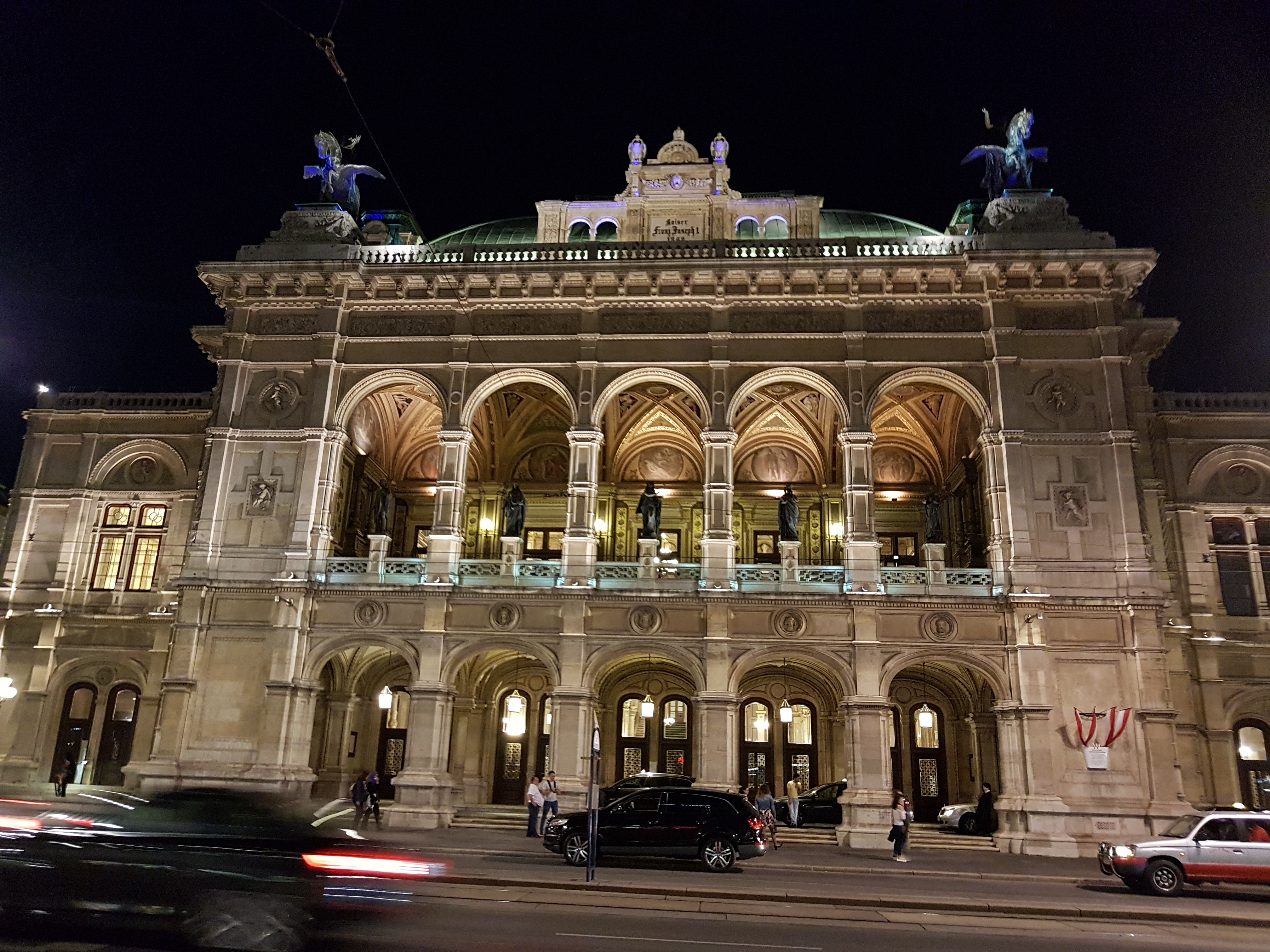
This romantic palace encapsulates Vienna’s imperial elegance and charm. Designed by the Viennese architect August Sicard von Sicardsburg in the 1860s, the original building was badly bombed in 1945 so much of what you see today is reconstructed. Only the main facade, the grand staircase and the Schwind Foyer were originally spared. Inside, there are frescoes by Moritz von Schwind and a famous series of Magic Flute frescoes on the veranda.
15. The Pantheon, Rome (Italy)
Rome is home to dozens of beautiful buildings worthy of a mention on this list, but the Pantheon is probably its best-looking. The ‘Temple of the Gods’ was build around AD 126 but was destroyed at least twice, then rebuilt. Originally it had a rectangular structure, but it evolved into the beautiful dome we recognise and love today.
16. The Chrysler Building, New York, United States

Built between 1928 and 1930, the famous Art Deco skyscraper is the jewel in New York’s skyline. At 319 metres, it was the world’s tallest building for eleven months before the Empire State Building dethroned it. It may be a far cry from the tallest skyscraper in the world today, but it is certainly one of the most beautiful. In fact, in 2005, New York Times declared it as “the most unique and most important landmark of architectural imagination on the New York skyline”.
17. Hawa Mahal, Jaipur, India
_-_img_01.jpg)
Built of red and pink sandstone in 1799, the historical palace of Hawa Mahal almost looks like a Wes Anderson filming location. In English, it translates as ‘The Palace of the Winds’. The five-storey building features 953 tiny windows decorated with intricate latticework, giving the effect of a beehive.
18. Hallgrímskirkja, Reykjavík, Iceland

Hallgrímskirkja is one of Reykjavík’s most famous landmarks and the largest church in the country. It’s also home to an exceptionally large organ by Johannes Klais, measuring 15 metres tall with 5275 pipes. Architect Samúelsson took inspiration from the steep Icelandic landscape and its famous basalt columns for the design.
19. Tiger’s Nest, Bhutan

Bhutan’s most majestic site is located on the side of a cliff, 3,120-metres (10236-feet) above sea level. It’s not easy to reach, but it’s well worth the trouble. Legend tells that Padmasambhava, the ‘Second Buddha’, meditated here for three months when he brought Buddhism to Bhutan. There are a handful of levels inside the monastery and three temples to explore.
20. Grand Palace, Bangkok, Thailand

The official residence of the Kings of Thailand since the 1700s, the Grand Palace has stood as a cultural emblem for centuries. It covers a 2,351,000 square foot site and features gold-roofed temples and an emerald Buddah.
21. The Chapel of the Holy Cross, Sedona, United States

This stunning church, designed by sculptor Marguerite Burnswig Staude in the 1950s, protrudes dramatically from the red cliffs. A giant cross holds together the huge stained-glass window, with sparkling views over the Verde Valley.
22. Biltmore Estate, Asheville, United States
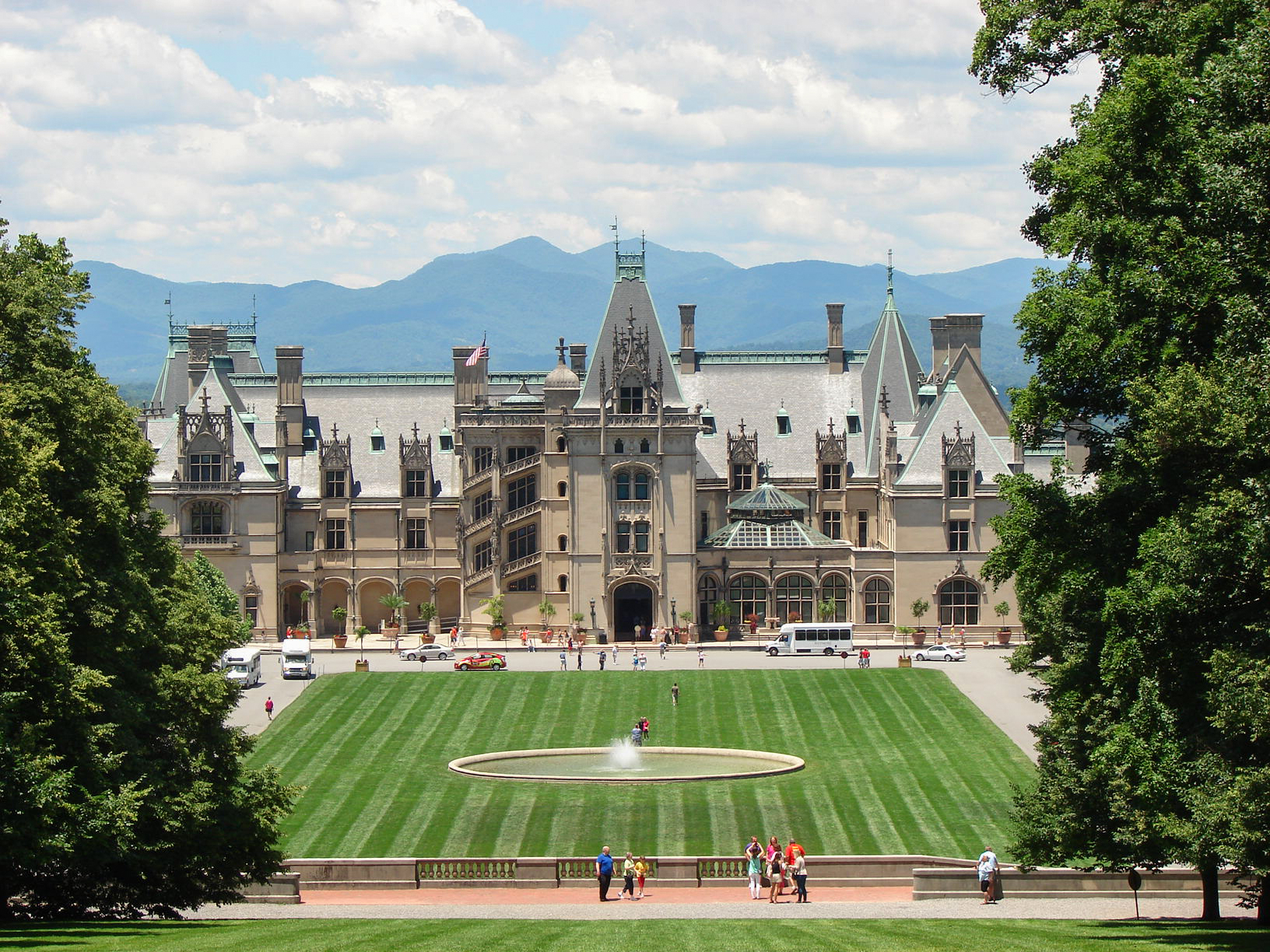
Once home to the Vanderbilts, the wealthiest family in America, this Chateau-style mansion is the country’s largest private home – even bigger than the US Capitol Building. Built in 1895, the mansion features perfectly landscaped gardens and over 250 rooms to explore too.
23. Le Mont-Saint-Michel, Normandy, France

This gravity-defying abbey is one of France’s favourite landmarks and a top pilgrimage destination. The structure itself is beautiful, but it’s the location that sets this building apart. Set on a magical island shared by Normandy and Brittany, the abbey dates back to the 8th century.
24. The Heydar Aliyev Centre, Baku, Azerbaijan

Designed by Iraqi-British architect Zaha Hadid, the Heydar Aliyev Centre has gained a reputation as one of the most architecturally distinctive – and beautiful– buildings in the world. Its distinctive flowing lines and lack of sharp angles are breathtaking up close.
25. Sydney Opera House, Sydney, Australia
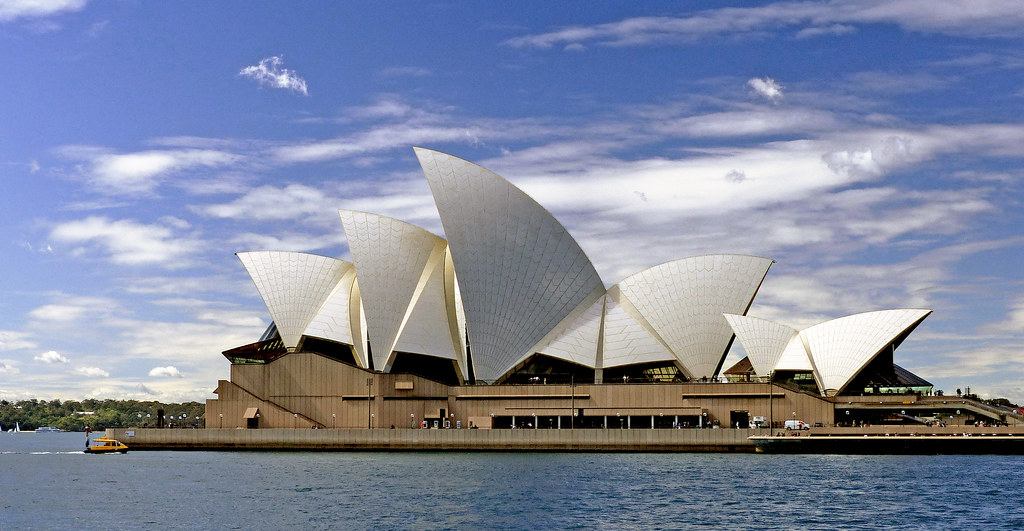
It’s one of the most instantly recognizable buildings in the world and it’s good looking too. Jørn Utzon’s visionary design was selected in 1957, but construction wasn’t without hiccups. It was estimated to take four years to complete, but it ended up taking 14 years – $95 million over budget. It’s still an impressive sight though, over five decades after it first opened.
26. Marina Bay Sands, Singapore
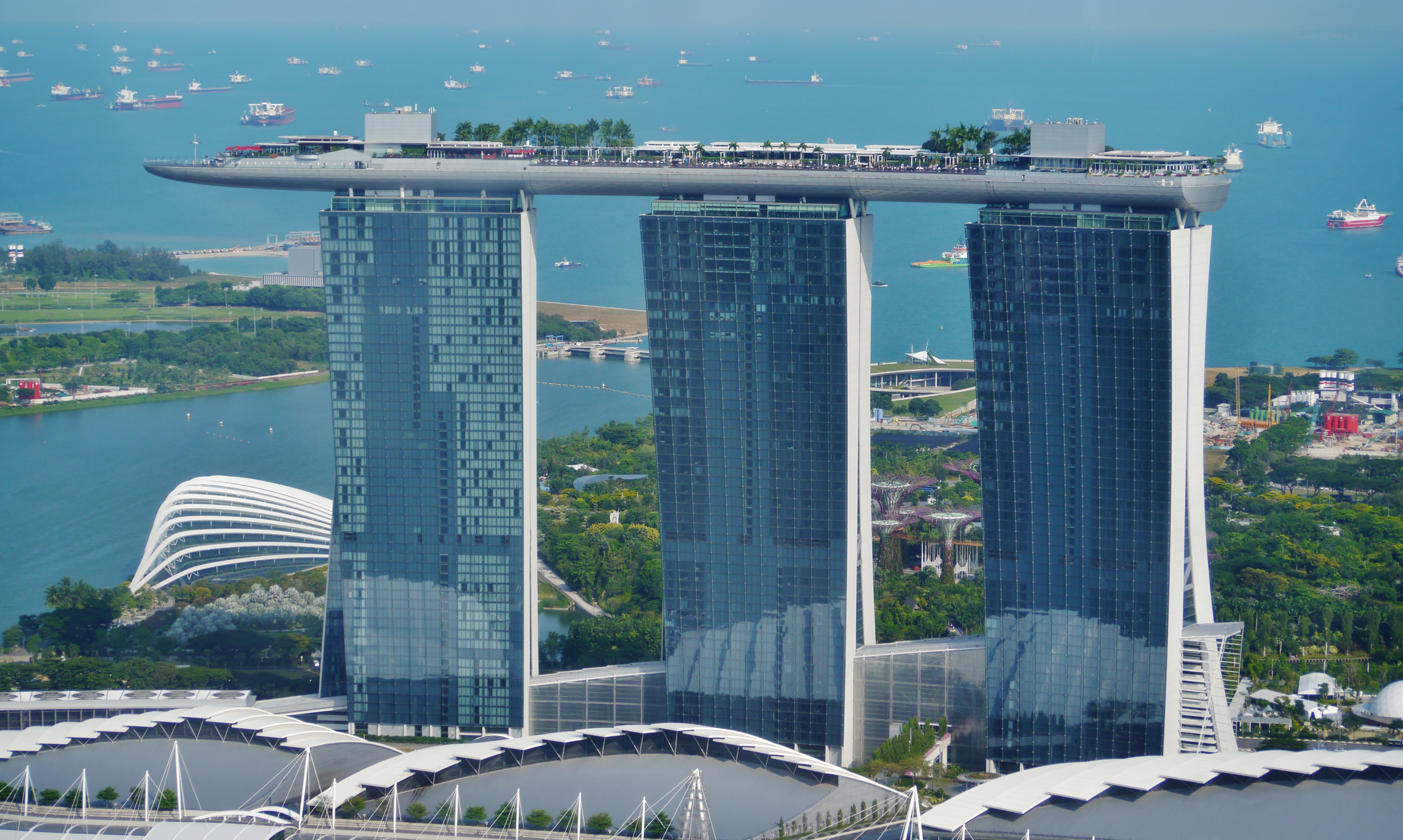
Singapore’s Marina Bay Sands is technically a hotel, yes, but it’s much more than that – it’s a design marvel. And, it’s appeared in hundreds of movies and TV shows, which proves just how drop dead gorgeous it is. You can catch a glimpse of its three iconic curved structures from almost everywhere in the city.
37. Würzburg Residence with the Court Gardens, Germany

This magnificent Baroque palace, surrounded by immaculately manicured gardens, is one of Germany’s most striking and largest palaces. The Prince-Bishops Lothar Franz and Friedrich Carl von Schönborn commissioned it as a new residence, modelled on the Palace of Versailles. Its staircase, the Treppenhaus, is topped off by the world’s largest fresco, painted by Giovanni Battista Tiepolo.
38. The Azadi Tower, Tehran, Iran
.jpg)
Built in 1971 to mark 2,500 years since the Persian Empire, the Azadi Tower is now Tehran’s most iconic landmark. Over 8,000 white marble blocks from Esfahan make up the 45-metre high tower. The architect, Hossein Amanat, used historical events as inspiration for the design. The main archway combines the arch of the pre-Islamic ruins at Ctesiphon with the pointed arches of the Islamic period, encapsulating a millennia of Persian history.
39. The Therme Vals, Vals, Switzerland

Like most bathhouses, most of the action takes place underground at the Therme Vals, but what makes this one different is its network of thermal pools positioned between each of its walls. Architect Peter Zumthor used 6,000 layered slabs of local stone, cut to his precise specifications, to create the spectacle.
30. Burj Khalifa, Dubai, United Arab Emirates
The Burj Khalifa gets top billing in Dubai. At 828 metres (2, 716-feet), not only is it the world’s tallest building, but it’s also 60% taller than the world’s second-tallest building. It comprises 160 floors and boasts the tallest observation deck in the world. The architecture features a triple-lobed footprint, an interpretation of the Hymocallis flower.